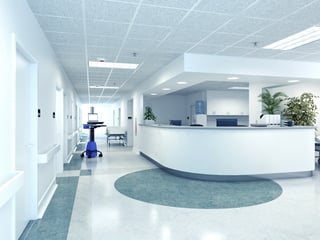Hospital staffs face a barrage of beeping devices daily while caring for patients. Alarm fatigue, as it’s known, can cause staff to ignore alarms, especially if different devices have similar sounds or frequencies. Nuisance alarms are those sounds that do not represent a danger to the patient, but come from devices that cannot otherwise be configured to stop the alarm from sounding when a situation is neither important nor urgent.
The best products in a healthcare setting enable configuration to reduce nuisance alarms to a minimum, and fit well into the healing nature of patient care spaces. Any product that is designed to produce either audible or visual alarms should be chosen carefully, preferably with the input of patient care staff that will see them and use them every day.
There are factors to consider when choosing a room pressure monitor. Not all of these apply to every healthcare or laboratory facility. But the option to use them can be important if the procedural or policy use of space changes over time.
Choose features that include:
- Alarm time delay - so there is some buffer of time (usually seconds) before an alarm will sound
- Alarm flutter buffer - to minimize alarms crossing in and out of thresholds from going on and off
- Alarm silence period - to let staff silence an alarm for sufficient period of time before the alarm sounds again
- Door alarm delay - to notify staff only after a sufficient period of time that a door was left open
- Door alarm disable - so alarms will not sound if a door is open
- Remote alarm silence - where a room monitor alarm can be silenced from the Nurse’s Station
- Visual alarm only at room, audible alarm at Nurse’s Station - to minimize patient impact
- Multi-room monitoring from a central location, such as a Nurse’s Station, where pre-alarm conditions can be viewed before they occur
Alarms exist to ensure patient safety. The more flexibility that exists to minimize nuisance alarms, the more hospital staff can focus on patient care, enabling maintenance personnel to respond to conditions that truly require attention.
CLICK HERE to learn more about Setra’s room pressure monitors and pressure transducers.


